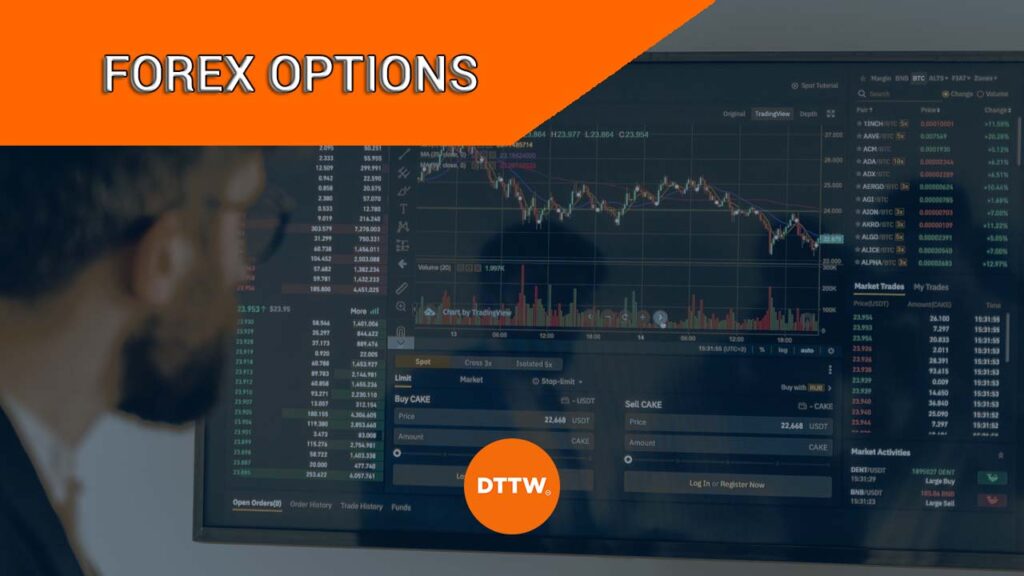If you’re beginning your journey as a forex trader, options trading may seem complex. With the right information, it becomes a powerful tool in your arsenal.
Let’s dive into a beginner’s guide, graduating to tips for intermediate traders and finally unveiling some secrets for experienced ones.
Table of Contents
Getting Started with Forex Options
Forex options are a type of derivative contract that gives the buyer the right, but not the obligation, to buy or sell a currency pair at a specified price, at or before a certain date. This makes them ideal for managing risk and predicting currency fluctuations.
For beginners, understanding forex options starts with getting to grips with two types: American and European. American options can be exercised at any point before the contract’s expiration date, while European ones only at expiration.
One way to start trading forex options is through selling forex call options. This is a strategy where the trader expects the price of the currency pair to fall. A comprehensive guide to selling forex call options can be found here, providing a wealth of information for novices.
Steps to Get Started with Options Trading

- Education: Before anything else, begin with a solid understanding of what options are and how they work. Read books, attend seminars, watch videos online, and make use of the many resources available to understand the basics of options trading.
- Brokerage Account: To trade options, you’ll need to open a brokerage account. Look for brokers who specialize in options trading, have good educational resources, and provide an excellent trading platform. Make sure to compare fees, customer service, and additional resources.
- Practice: Use a virtual or paper trading account to practice strategies without risking real money. Many brokers offer this feature where you can trade with virtual money, which can be an excellent way to learn.
- Regulatory Approval: Before you can start trading options, you’ll need to obtain approval from your broker. They will typically have four or five “levels” of approval, each of which allows you to implement different strategies. The broker will consider your trading experience, financial knowledge, and your risk tolerance before granting the appropriate level.
- Start Small: Once approved, start trading but remember to begin with small, manageable amounts. There’s no hurry to dive in deeply, and it’s wise to learn the ropes before investing significant sums.
- Continuous Learning: Keep expanding your knowledge as you go. Participate in forums, sign up for newsletters, and always be on the lookout for new strategies to learn and try.
A Beginner’s Options Strategy – The Covered Call
One of the most common strategies for beginners is the covered call strategy. This involves holding a long position in an asset while selling call options on that same asset.
The idea is to generate additional income from the option premium, which you receive when selling the call option. This strategy is generally used when the market outlook on the underlying asset is neutral or mildly bullish.
To execute a covered call, you would:
- Buy 100 shares (or use shares you already own) of a stock.
- Sell one call option (remember, 1 option contract = 100 shares) for each 100 shares of stock you own.
The premium you receive helps to cushion some downside risk, and if the stock’s price remains below the strike price of the option, you’ll keep the premium and can repeat the process.
Remember, while trading, it’s essential to keep learning and gradually incorporating more complex strategies as your understanding deepens. Markets are dynamic, and your ability to adapt will play a vital role in your success as an options trader.
Intermediate-Level Forex Options Trading

Once you’ve mastered the basics, it’s time to start exploring more complex trading strategies.
For intermediate traders, it’s crucial to understand the intrinsic and time value of options.
Intrinsic value reflects the difference between the strike price and the current spot price. Time value, on the other hand, depends on the time remaining until the option’s expiration. These two factors can significantly influence your trading decisions.
As an intermediate trader, another aspect to consider is the use of forex option chains. These diagrams provide an overview of various options contracts for a particular security. This tool helps visualize the range of possibilities, enabling you to make more informed decisions.
Secrets for Advanced Forex Option Traders

For seasoned traders, it’s all about refinement, understanding subtle market signals and implementing advanced strategies. Here are a few “secrets” to take your trading to the next level.
Firstly, leverage “Greeks” in your trading. Greeks are statistical values that provide a way to measure risks associated with options. Delta, Gamma, Theta, Vega, and Rho each measure different market factors and their impact on options pricing. Understanding these values can greatly enhance your trading strategy.
Secondly, learn to hedge your forex options. This strategy involves taking a position in the forex spot market that offsets your options position. Hedging can protect you from unexpected market swings and limit potential losses.
Lastly, pay attention to news and events that can cause currency volatility. From geopolitical events to economic indicators, these factors can impact currency values. Experienced traders use this knowledge to anticipate market movements and trade accordingly.
Summary
In conclusion, forex options trading offers an attractive path for traders of all experience levels. It provides a way to profit from currency movements while managing risk.
From understanding basic options types to leveraging advanced strategies like Greeks and hedging, success in forex options trading is a continuous journey of learning and adapting. Always remember to approach it with an open mind, prepared for the exciting opportunities that lie ahead.





